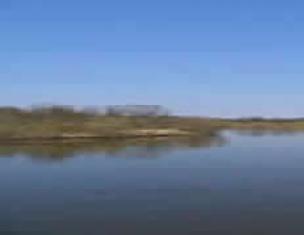The most recognizable symbol of China, as well as its long and colorful history, has become Great Chinese Wall . This monumental structure consists of numerous walls and fortifications, many of which run parallel to each other. Originally conceived for protection against nomadic raids by Emperor Qin Shi Huang (circa 259-210 BC). Great Wall of China (China) became one of the most ambitious construction projects in the history of mankind.

The great Wall of China: Interesting Facts
Here are the most interesting facts about the Great Wall of China:
VKS is the longest wall in the world and the largest building of antiquity.
Stunning scenery, from the beaches of Qinhuangdao to the rugged mountains around Beijing.

Consists of the great Wall of China from many sections:
- Badaling
- Huang Huancheng
- Juyunguan
- Ji Yongguan
- Shanhaiguan
- Yangguang
- Gubeika
- Giancu
- Jin Shan Ling
- Mutianyu
- Symatai
- Yangmenguang

Here's an interesting fact. Why do the loopholes of the Great Wall of China face China?? In fact, the photo shows that they look in both directions at once - that is, they were made with the expectation that they could be defended on both sides.
Length of the Great Wall of China in kilometers
- Contrary to popular belief, the wall is not visible from space without a good approach.
- Already during the Qin Dynasty (221-207 BC), sticky rice dough was used for construction as a kind of material for holding stone blocks together.
- The labor force at the construction site were military personnel, peasants, convicts and prisoners, naturally not of their own free will.
- Although officially 8,851 km, the length of all the branches and sections built over thousands of years is estimated at 21,197 km. The circumference of the equator is 40,075 km.

- There is a popular legend about Meng Jing Nu, whose husband died at a construction site. Her cry was so bitter that the Great Wall of China collapsed, exposing her husband's bones, and the wife was able to bury him.
- There are still traces of bullets in the Gubeik area; there was a fierce battle here in the past.
- During the Cultural Revolution (1966-1976), many stones from the wall were stolen to build houses, farms and reservoirs.
- Northwestern sections of the wall (eg in Gansu and Ningxia provinces) will likely disappear within 20 years. The reason for this is how natural conditions, and human activity.
- The most famous part of the Great Wall, Badaling, has been visited by more than 300 heads of state and dignitaries from around the world, the first being the Soviet politician Klim Voroshilov in 1957.


The Great Wall of China (China): history of creation
Significance: The longest fortification ever built by man.
Purpose of construction: protection of the Chinese Empire from Mongol and Manchu invaders.
Significance for tourism: the largest and at the same time the most popular attraction of the PRC.
Provinces where the Great Wall of China passes: Liaoning, Hebei, Tianjin, Beijing, Shanxi, Shaanxi, Ningxia, Gansu.
Start and end: From Shanhaiguan Pass (39.96N, 119.80E) to Jiayu Belt (39.85N, 97.54E). The direct distance is 1900 km.
Closest site to Beijing: Juyunguan (55 km)

Most visited site: Badaling (63 million visitors in 2001)
Terrain: mostly mountains and hills. Great Wall of China, China extends from the Bohai coast in Qinhuangdao, around the northern part of the Chinese Plain, across the Loess Plateau. Then it goes along the desert province of Gansu, between the Tibetan plateau and the loess hills of Inner Mongolia.

Altitude: from sea level to more than 500 meters.
The most suitable time of year to visit the Great Wall of China: areas near Beijing are best visited in spring or autumn. Jiayuguan - from May to October. Shanhaiguan Passage - in summer and early autumn.
The Great Wall of China is the largest cemetery. More than a million people lost their lives during its construction.
« Long wall 10,000 li” – this is what the Chinese themselves call this miracle of ancient engineering. For a huge country with a population of almost one and a half billion, it has become a source of national pride, a calling card that attracts travelers from all over the world. Today, the Great Wall of China is one of the most popular attractions - approximately 40 million people visit it every year. In 1987, the unique site was included by UNESCO in the list of world cultural heritage.
Local residents also like to repeat that anyone who does not climb the wall is not a real Chinese. This phrase, uttered by Mao Zedong, is perceived as a real call to action. Despite the fact that the height of the structure is approximately 10 meters with a width of different areas within 5-8 m (not to mention the not-so-convenient steps), there are no fewer foreigners wanting to feel like true Chinese, at least for a moment. In addition, from above, a magnificent panorama of the surrounding area opens up, which you can admire endlessly.
You can’t help but be surprised at how harmoniously this creation of human hands fits into the natural landscape, forming a single whole with it. The solution to the phenomenon is simple: the Great Wall of China was not laid across desert terrain, but next to hills and mountains, spurs and deep gorges, smoothly bending around them. But why did the ancient Chinese need to build such a large and extensive fortification? How did the construction proceed and how long did it last? These questions are asked by everyone who has been lucky enough to visit here at least once. Researchers have long ago received answers to them, and we will dwell on the rich historical past of the Great Wall of China. It itself leaves tourists with an ambiguous impression, since some areas are in excellent condition, while others are completely abandoned. Only this circumstance in no way detracts from the interest in this object - rather, on the contrary.

History of the construction of the Great Wall of China

In the 3rd century BC, one of the rulers of the Celestial Empire was Emperor Qing Shi Huang. His era fell on the Warring States period. It was a difficult and contradictory time. The state was threatened from all sides by enemies, especially the aggressive Xiongnu nomads, and it needed protection from their treacherous raids. Thus was born the decision to build an impregnable wall - high and extensive, so that no one could disturb the peace of the Qin Empire. At the same time, this structure was supposed to, in modern terms, demarcate the boundaries of the ancient Chinese kingdom and contribute to its further centralization. The wall was also intended to solve the issue of “purity of the nation”: by fencing off the barbarians, the Chinese would be deprived of the opportunity to enter into marriage relations with them and have children together.
The idea of building such a grandiose border fortification was not born out of the blue. There were already precedents. Many kingdoms - for example, Wei, Yan, Zhao and the already mentioned Qin - tried to build something similar. The State of Wei built its wall around 353 BC. BC: the adobe structure divided it with the Qin kingdom. Later, this and other border fortifications were connected to each other, and they formed a single architectural ensemble.

Construction of the Great Wall of China began along Yingshan, a mountain system in Inner Mongolia, in northern China. The emperor appointed commander Meng Tian to coordinate its progress. There was a lot of work to be done. Previously built walls needed to be strengthened, connected with new sections and extended. As for the so-called “internal” walls, which served as boundaries between individual kingdoms, they were simply demolished.
The construction of the first sections of this grandiose object took a total of a decade, and the construction of the entire Great Wall of China lasted for two millennia (according to some evidence, even for as long as 2,700 years). At its different stages, the number of people simultaneously involved in the work reached three hundred thousand. In total, the authorities attracted (more precisely, forced) about two million people to join them. These were representatives of many social strata: slaves, peasants, and military personnel. The workers worked in inhumane conditions. Some died from overwork as such, others became victims of severe and incurable infections.

The terrain itself was not conducive to comfort, at least relative. The structure ran along the mountain ranges, skirting all the spurs extending from them. The builders moved forward, overcoming not only high climbs, but also many gorges. Their sacrifices were not in vain - at least from the perspective of today: it was precisely this landscape of the area that determined the unique appearance of the miracle structure. Not to mention its size: on average, the height of the wall reaches 7.5 meters, and this does not take into account the rectangular teeth (with them the entire 9 m is obtained). Its width is also uneven - at the bottom 6.5 m, at the top 5.5 m.
The Chinese popularly call their wall the “earth dragon.” And it is by no means accidental: at the very beginning, any materials were used during its construction, primarily compacted earth. It was done like this: first, shields were woven from reeds or twigs, and between them clay, small stones and other available materials were pressed in layers. When Emperor Qin Shi Huang got down to business, they began to use more reliable stone slabs, which were laid close to each other.

However, it was not only the variety of materials that determined the heterogeneous appearance of the Great Wall of China. The towers also make it recognizable. Some of them were built even before the wall itself appeared, and were built into it. Other elevations appeared simultaneously with the stone “border”. It is not difficult to determine which ones were before and which ones were built after: the first ones have a smaller width and are located at unequal distances, while the second ones fit organically into the building and are exactly 200 meters apart from each other. They were usually built rectangular, on two floors, equipped with upper platforms with loopholes. Observation of enemy maneuvers, especially when they were advancing, was carried out from signal towers located here on the wall.
When the Han Dynasty, which ruled from 206 BC to 220 AD, came to power, the Great Wall of China was expanded westward to Dunhuang. During this period, the object was equipped with a whole line of watchtowers that went deep into the desert. Their purpose was to protect caravans with goods, which often suffered from raids by nomads. Most of the sections of the wall that have survived to this day were built during the Ming Dynasty, which ruled from 1368 to 1644. They were built mainly from more reliable and durable materials - stone blocks and bricks. Over the three centuries of the reign of the said dynasty, the Great Wall of China “grew” significantly, stretching from the coast of Bohai Bay (Shanhaiguan Outpost) to the border of the modern Xinjiang Uyghur Autonomous Region and Gansu Province (Yumenguan Outpost).
Where does the wall begin and end?
Man-made border Ancient China originates in the north of the country, in the city of Shanghai-guan, located on the shores of the Bohai Bay of the Yellow Sea, which once had strategic importance on the borders of Manchuria and Mongolia. This is the easternmost point of the 10,000 Li Long Wall. The Laoluntou Tower is also located here, it is also called the “dragon’s head”. The tower is also notable for the fact that it is the only place in the country where the Great Wall of China is washed by the sea, and it itself goes as much as 23 meters into the bay.




The westernmost point of the monumental structure is located in the vicinity of the city of Jiayuguan, in the central part of the Celestial Empire. Here the Great Wall of China is best preserved. This site was built back in the 14th century, so it also might not stand the test of time. But it survived due to the fact that it was constantly strengthened and repaired. The westernmost outpost of the empire was built near Mount Jiayuoshan. The outpost was equipped with a moat and walls - internal and semicircular external. There are also main gates located on the western and east side outposts The Yuntai Tower stands proudly here, considered by many almost as a separate attraction. Inside, Buddhist texts and bas-reliefs of ancient Chinese kings are carved on the walls, which arouse the constant interest of researchers.


Myths, legends, interesting facts

For a long time it was believed that the Great Wall of China could be seen from space. Moreover, this myth was born long before flights into low-Earth orbit, in 1893. This is not even an assumption, but a statement made by The Century magazine (USA). Then they returned to this idea in 1932. The then famous showman Robert Ripley claimed that the structure could be seen from the moon. With the advent of the era of space flight, these claims were generally refuted. According to NASA experts, the object is barely visible from orbit, from which it is approximately 160 km from the Earth's surface. The wall, and then with the help of strong binoculars, was able to be seen by the American astronaut William Pogue.
Another myth takes us directly back to the construction of the Great Wall of China. An ancient legend says that powder prepared from human bones was allegedly used as a cementing solution that held the stones together. There was no need to go far to get the “raw materials” for it, given that many workers died here. Fortunately, this is just a legend, albeit a creepy one. Ancient masters actually prepared the adhesive solution from powder, but the base of the substance was ordinary rice flour.

There is a legend that a large fiery Dragon paved the way for the workers. He indicated in which areas the wall should be built, and the builders steadily followed in his footsteps. Another legend tells of a farmer's wife named Meng Jing Nu. Having learned about the death of her husband during construction, she came there and began to cry inconsolably. As a result, one of the plots collapsed, and the widow saw the remains of her loved one underneath, which she was able to take and bury.
It is known that the wheelbarrow was invented by the Chinese. But few people know that they were prompted to do this by the beginning of the construction of a grandiose project: the workers needed a convenient device with which they could transport building materials. Some sections of the Great Wall of China, which were of exceptional strategic importance, were surrounded by protective ditches, filled with water or left in the form of ditches.


 Great Wall of China in winter
Great Wall of China in winter
Sections of the Great Wall of China
Several sections of the Great Wall of China are open to tourists. Let's talk about some of them.
The outpost closest to Beijing, the modern capital of the People's Republic of China, is Badaling (it is also one of the most popular). It is located north of the Juyunguan Pass and only 60 km from the city. It was built during the era of the ninth Chinese emperor, Hongzhi, who reigned from 1487 to 1505. Along this section of the wall there are signal platforms and watchtowers, which offer a magnificent view if you climb to its highest point. At this location, the height of the object reaches an average of 7.8 meters. The width is sufficient for 10 pedestrians to pass or 5 horses to pass.









Another outpost quite close to the capital is called Mutianyu and is located 75 km from it, in Huairou, a municipal district of Beijing. This site was built during the reign of Emperors Longqing (Zhu Zaihou) and Wanli (Zhu Yijun), who belonged to the Ming Dynasty. At this point the wall takes a sharp turn towards the northeastern regions of the country. The local landscape is mountainous, with many steep slopes and cliffs. The outpost is notable for the fact that at its southeastern end three branches of the “great stone border” come together at a height of 600 meters.









One of the few areas where the Great Wall of China has been preserved almost in its original form is Symatai. It is located in the village of Gubeikou, which is 100 km northeast of Miyun County, which belongs to the municipality of Beijing. This section stretches for 19 km. In its southeastern part, impressive with its impregnable appearance even today, there are partially preserved observation towers (14 in total).





Originates from the Jinchuan Gorge steppe area The walls are located east of the county town of Shandan, in Zhangye County, Gansu Province. In this place, the structure stretches for 30 km, and its height varies between 4-5 meters. In ancient times, the Great Wall of China was supported on both sides by a parapet that has survived to this day. The gorge itself deserves special attention. At a height of 5 meters, if you count from its bottom, several carved hieroglyphs can be seen right on the rocky cliff. The inscription translates as "Jinchuan Citadel".





In the same Gansu province, north of the Jiayuguan outpost, at a distance of only 8 km, there is a steep section of the Great Wall of China. It was built during the Ming Empire. It received this appearance due to the specifics of the local landscape. The bends of the mountainous terrain, which the builders were forced to take into account, “lead” the wall to a steep descent straight into the crevice, where it runs smoothly. In 1988, Chinese authorities restored this site and opened it to tourists a year later. From the watchtower there is a magnificent panorama of the surroundings on both sides of the wall.
 A steep section of the Great Wall of China
A steep section of the Great Wall of China
The ruins of the Yanguan outpost are located 75 km southwest of the city of Dunhuang, which in ancient times served as the gateway to the Celestial Empire on the Great Silk Road. In ancient times, the length of this section of the wall was approximately 70 km. Here you can see impressive piles of stones and earthen ramparts. All this leaves no doubt: there were at least a dozen sentinel and signal towers here. However, they have not survived to this day, except for the signal tower north of the outpost, on Mount Dundong.



The section known as the Wei Wall originates in Chaoyuandun (Shaanxi Province), located on the west coast of the Changjian River. Not far from here is the northern spur of one of the five sacred mountains of Taoism - Huashan, which belongs to the Qinling Range. From here, the Great Wall of China moves towards the northern regions, as evidenced by its fragments in the villages of Chennan and Hongyan, of which the first is best preserved.
Measures to preserve the wall
Time has not been kind to this unique architectural object, which many call the eighth wonder of the world. The rulers of the Chinese kingdoms did everything in their power to counteract the destruction. However, from 1644 to 1911 - the period of the Manchu Qing dynasty - Great Wall was practically abandoned and was subjected to further more destruction. Only the Badaling section was maintained in order, and that was because it was located near Beijing and was considered the “front gate” to the capital. History, of course, does not tolerate subjunctive mood, but if not for the betrayal of the commander Wu Sangui, who opened the gates of the Shanhaiguan outpost to the Manchus and let the enemy through, the Ming dynasty would not have fallen, and the attitude towards the wall would have remained the same - careful.


Deng Xiaoping, the founder of economic reforms in the PRC, paid great attention to preserving the country's historical heritage. It was he who initiated the restoration of the Great Wall of China, the program of which started in 1984. It was financed from a variety of sources, including funds from foreign business structures and donations from individuals. To raise money in the late 80s, an art auction was even held in the capital of the Celestial Empire, the progress of which was widely covered not only in the country itself, but also by leading television companies in Paris, London and New York. A lot of work was done with the proceeds, but sections of the wall remote from tourist centers are still in poor condition.
On September 6, 1994, the Great Wall of China Thematic Museum was inaugurated in Badaling. Behind the building, which resembles a wall with its appearance, she herself is located. The institution is designed to popularize the great historical and cultural heritage of this, without exaggeration, unique architectural object.



Even the corridor in the museum is stylized like it - it is distinguished by its tortuousness, along its entire length there are “passages”, “signal towers”, “fortresses”, etc. The excursion makes you feel as if you are traveling along the real Great Wall of China: it’s so here everything is thought out and realistic.
Note to tourists

On the Mutianyu section, the longest of the fully restored fragments of the wall, located 90 km north of the capital of the People's Republic of China, there are two funiculars. The first is equipped with closed cabins and is designed for 4-6 people, the second is an open lift, similar to ski lifts. Those suffering from acrophobia (fear of heights) are better off not taking risks and prefer a walking tour, which, however, is also fraught with difficulties.
Climbing the Great Wall of China is quite easy, but descending can turn into real torture. The fact is that the height of the steps is not the same and varies between 5-30 centimeters. You should go down them with extreme care and it is advisable not to stop, because after a pause it is much more difficult to resume the descent. One tourist even calculated: climbing the wall at its lowest section involves climbing 4 thousand (!) steps.
Time to visit, how to get to the Great Wall of China
Excursions to the Mutianyu site from March 16 to November 15 are held from 7:00 to 18:00, in other months - from 7:30 to 17:00.
The Badaling site is open to visitors from 6:00 to 19:00 in summer and from 7:00 to 18:00 in winter.
You can get acquainted with the Symatai site in November-March from 8:00 to 17:00, in April-November - from 8:00 to 19:00.

A visit to the Great Wall of China is provided both as part of excursion groups and on an individual basis. In the first case, tourists are delivered by special buses, which usually depart from Beijing's Tiananmen Square, Yabaolu and Qianmen streets; in the second, inquisitive travelers are served public transport or a private car with driver hired for the whole day.

The first option is suitable for those who find themselves in the Celestial Empire for the first time and do not know the language. Or, on the contrary, those who know the country and speak Chinese, but at the same time want to save money: group excursions are relatively inexpensive. But there are also costs, namely the significant duration of such tours and the need to focus on other members of the group.
Public transport to get to the Great Wall of China is usually used by those who know Beijing well and speak and read at least a little Chinese. A trip by regular bus or train will cost less than even the most attractively priced group tour. There is also time savings: a self-guided tour will allow you not to be distracted, for example, by visiting numerous souvenir shops, where guides love to take tourists in the hope of earning their commissions from sales.
Renting a driver and a car for the whole day is the most comfortable and flexible way to get to the section of the Great Wall of China that you choose. The pleasure is not cheap, but it is worth it. Wealthy tourists often book a car through the hotel. You can simply catch one on the street, like an ordinary taxi: this is how many residents of the capital earn money, readily offering their services to foreigners. Just don’t forget to get the driver’s phone number or take a photo of the car itself, so you don’t have to look for it for a long time if the person leaves or drives off somewhere before you return from the excursion.
Construction of the first sections of this grandiose facility began during the Warring States period in the 3rd century BC. e. The Great Wall of China was supposed to protect the subjects of the Empire from nomadic tribes who often attacked settlements, developing in the center of China. Another function of this grandiose object was to clearly fix the boundaries of the Chinese state and contribute to the creation of a single empire, which before these events was composed of many conquered kingdoms.
Construction of the Great Wall of China
The Great Wall of China was built quite quickly - within 10 years. This was largely due to the cruelty of Qin Shi Huang, who ruled at that time. Almost half a million people were involved in its construction, most of whom died at the foot of this site from hard work and exhaustion. These were mainly soldiers, slaves and landowners.
As a result of construction, the Great Wall of China stretched for 4000 km and watchtowers were installed on it every 200 meters. Two centuries later, the wall was extended to the west, as well as deep into the desert, to protect trade caravans from nomads.
Over time, this structure lost its strategic purpose, the wall was no longer occupied, which contributed to its destruction. The Great Wall of China was given a second life by the rulers of the Ming Dynasty, who were in power from 1368 to 1644. It was during their time that grandiose events began again. construction works on the restoration and expansion of the Great.
As a result, it stretched from the Liaodong Gulf to the Gobi Desert. Its length became 8852 km, including all branches. The average height in those days reached 9 meters, and the width varied from 4 to 5 meters.
Current state of the Great Wall of China
Today, only about 8% of the Great Wall of China has retained its original appearance, which was given to it during the reign of the Ming Dynasty. Their height reaches 7-8 meters. Many sections have not been able to survive to this day, and most of the remaining wall is being destroyed due to weather conditions, acts of vandalism, the construction of various roads and other objects. Some areas are subject to active erosion due to improper management Agriculture in the 50-90s of the last century.
However, since 1984, a program has been launched to restore this important cultural and historical structure of the highest level. After all, the Great Wall of China is still an architectural monument and a place of mass pilgrimage for tourists from all over the world.
The longest defensive structure in the world is the Great Wall of China. Interesting facts about her today are quite numerous. This masterpiece of architecture is fraught with many mysteries. It causes fierce debate among various researchers.
The length of the Great Wall of China has not yet been established precisely. It is only known that it stretches from Jiayuguan, located in Gansu Province, to (Liaodong Bay).
Wall length, width and height
The length of the structure is about 4 thousand km, according to some sources, and according to others - more than 6 thousand km. 2450 km is the length of a straight line drawn between its end points. However, it must be taken into account that the wall does not go straight anywhere: it bends and turns. The length of the Great Wall of China, therefore, should be at least 6 thousand km, and possibly more. The height of the structure is on average 6-7 meters, reaching 10 meters in some areas. The width is 6 meters, that is, 5 people can walk along the wall in a row, even a small car can easily pass. On its outer side there are “teeth” made of large bricks. The inner wall is protected by a barrier, the height of which is 90 cm. Previously, there were drains in it, made through equal sections.

Start of construction
The Great Wall of China began during the reign of Qin Shi Huang. He ruled the country from 246 to 210. BC e. It is customary to associate the history of the construction of such a structure as the Great Wall of China with the name of this creator of a unified Chinese state - the famous emperor. Interesting facts about it include a legend according to which it was decided to build it after one court soothsayer predicted (and the prediction came true many centuries later!) that the country would be destroyed by barbarians coming from the north. In order to protect the Qin Empire from nomads, the emperor ordered the construction of defensive fortifications, unprecedented in scale. They later turned into this grandiose building like the Great Wall of China.
Facts indicate that the rulers of various principalities located in Northern China erected similar walls along their borders even before the reign of Qin Shi Huang. By the time of his accession to the throne, the total length of these ramparts was about 2 thousand km. The emperor first only strengthened and united them. This is how the unified Great Wall of China was formed. Interesting facts about its construction, however, do not end there.
Who built the wall?

Real fortresses were built at checkpoints. Intermediate military camps for patrolling and garrison service, and watchtowers were also built. "Who built the Great Wall of China?" - you ask. Hundreds of thousands of slaves, prisoners of war and criminals were rounded up to build it. When workers became scarce, mass mobilizations of peasants also began. Emperor Shi Huang, according to one legend, ordered a sacrifice to the spirits. He ordered that a million people be immured in the wall under construction. This is not confirmed by archaeological data, although isolated burials were found in the foundations of towers and fortresses. It is still unclear whether they were ritual sacrifices, or whether they simply buried dead workers in this way, those who built the Great Wall of China.
Completion of construction
Shortly before Shi Huangdi's death, the construction of the wall was completed. According to scientists, the reason for the impoverishment of the country and the turmoil that followed the death of the monarch was precisely the enormous costs of building defensive fortifications. The Great Wall stretched through deep gorges, valleys, deserts, along cities, across the whole of China, turning the state into an almost impregnable fortress.
Protective function of the wall

Many later called its construction pointless, since there would have been no soldiers to defend such a long wall. But it should be taken into account that it served to protect against the light cavalry of various nomadic tribes. In many countries, similar structures were used against steppe inhabitants. For example, this is the Trajan Wall, built by the Romans in the 2nd century, as well as the Serpentine Walls, built in the south of Ukraine in the 4th century. Large detachments of cavalry could not overcome the wall, since cavalry needed to break through or destroy large plot. And without special devices it was not easy to do this. Genghis Khan managed to do this in the 13th century with the help of military engineers from Zhudrjey, the kingdom he conquered, as well as local infantry in huge numbers.
How different dynasties cared for the wall

All subsequent rulers took care of the safety of the Great Wall of China. Only two dynasties were an exception. These are the Yuan, the Mongol dynasty, and also the Manchu Qin (the latter, which we will talk about a little later). They controlled the lands north of the wall, so they did not need it. The history of the building went through different periods. There were times when the garrisons guarding it were recruited from pardoned criminals. The tower, located on the Golden Terrace of the Wall, was decorated in 1345 with bas-reliefs depicting Buddhist guards.
After it was defeated during the reign of the next one (Ming), in 1368-1644 work was carried out to strengthen the wall and maintain the defensive structures in proper condition. Beijing, the new capital of China, was only 70 kilometers away, and its safety depended on the safety of the wall.
During the reign, women were used as sentries on the towers, monitoring the surrounding area and, if necessary, giving an alarm signal. This was motivated by the fact that they treat their duties more conscientiously and are more attentive. There is a legend according to which the legs of the unfortunate guards were cut off so that they could not leave their post without an order.
Folk legend
We continue to expand on the topic: “The Great Wall of China: interesting facts.” The photo of the wall below will help you imagine its greatness.

Folk legend tells about the terrible hardships that the builders of this structure had to endure. The woman, whose name was Meng Jiang, came here from a distant province to bring warm clothes to her husband. However, upon reaching the wall, she learned that her husband had already died. The woman was unable to find his remains. She lay down near this wall and cried for several days. Even the stones were touched by the woman’s grief: one of the sections of the Great Wall collapsed, revealing the bones of Meng Jiang’s husband. The woman took the remains of her husband home, where she buried them in the family cemetery.
Invasion of the “barbarians” and restoration work
The wall did not save the “barbarians” from the last large-scale invasion. The overthrown aristocracy, fighting with the rebels representing the Yellow Turban movement, allowed numerous Manchu tribes into the country. Their leaders seized power. They founded a new dynasty in China - the Qin. From that moment on, the Great Wall lost its defensive significance. It completely fell into disrepair. Only after 1949 did restoration work begin. The decision to start them was made by Mao Zedong. But during the “cultural revolution” that took place from 1966 to 1976, the “red guards” (red guards), who did not recognize the value ancient architecture, decided to destroy some sections of the wall. She looked, according to eyewitnesses, as if she was subject to an enemy assault.
Now it was not only forced laborers or soldiers who were sent here. Service on the wall became a matter of honor, as well as a strong career incentive for young people from noble families. The words that one who was not there cannot be called a fine fellow, which Mao Zedong turned into a slogan, became a new saying right then.
The Great Wall of China today

Not a single description of China is complete without mentioning the Great Wall of China. Local residents say that its history is half the history of the entire country, which cannot be understood without visiting the building. Scientists have calculated that from all the materials that were used during the Ming Dynasty during its construction, it is possible to build a wall whose height is 5 meters and thickness is 1 meter. It is enough to encircle the entire globe.
The Great Wall of China has no equal in its grandeur. This building is visited by millions of tourists from all over the world. Its scale still amazes today. Anyone can purchase a certificate on the spot, which indicates the time of visiting the wall. The Chinese authorities were even forced to restrict access here in order to ensure better preservation of this great monument.
Is the wall visible from space?
For a long time it was believed that this was the only man-made object visible from space. However, this opinion has recently been refuted. Yang Li Wen, China's first astronaut, sadly admitted that he could not see this monumental structure, no matter how hard he tried. Perhaps the whole point is that during the first space flights the air over Northern China was much cleaner, and therefore the Great Wall of China was visible earlier. The history of its creation, interesting facts about it - all this is closely connected with many traditions and legends that surround this majestic building even today.
This . Indeed, this building is stunning in its scale. In Chinese it is called 万里长城 Wanli Changcheng which literally means "The long wall [extends] ten thousand li". Li is an ancient measure of length; its value varied in different periods, but on average it was about 500 m. “Ten thousand” also does not need to be taken literally - in the hieroglyph 万 in addition to its direct meaning“ten thousand” (a four-digit number system is adopted in China) also has the meaning “very many”, “all”.
Some numbers
The Great Wall of China begins in Shanhaiguan County 山海关 (Hebei Province), on the seashore and further stretches to the west, where it ends at the Jiayuguan Outpost 嘉峪关 on the border of Gansu Province and the Xinjiang Uyghur Autonomous Region. In fact, the Great Wall is a collection of large quantity walls built at different times.
It resembles a huge one that protects from the north from barbarian invasions. According to the findings of archaeologists, the total length of the Wall is 8,851.8 km, of which the artificial wall itself is 6,259.6 km, trenches are 359.7 km and natural defensive barriers such as mountains and rivers are 2,232.5 km. The height of the wall is 6-7 m, thickness - 4-5 m, so that a cart could pass along it. Many areas are so steep that stairs are built there. Besides, in Lately Several more previously unknown sections of the Wall were found.
History of the construction of the Great Wall of China
The beginning of the construction of the Wall is usually associated with the First Emperor of the Qin Dynasty - Qin Shihuang 秦始皇 (259-210 BC). However, the very idea of building defensive walls arose much earlier, during the Spring and Autumn period ( Chun-qiu春秋时代, 771-476 BC). During the Warring States period ( Zhan-guo战国时代, 475-221 BC) between the kingdoms of Qin, Wei, Zhao, Qi, Yan and Zhongshan, fortifications were erected to protect the borders - moats and walls. The walls were built from blocks of specially compacted earth and could withstand attacks from weapons such as swords and spears.
Having come to power, Emperor Qin Shi Huang ordered to demolish all the fortifications between the former kingdoms, and, on the contrary, strengthen them in the north in order to protect themselves from the attacks of the Xiongnu. According to historians, about a million people took part in the construction of the wall during the Qin era - a fifth of the entire population of the Celestial Empire at that time. Very few Qin buildings have survived to this day. During the Han era (206 BC-220 AD), construction continued and a section was built to Dunhuang, and further west - watchtowers to protect caravans moving along the Great Silk Road. Construction continued during the Six Dynasties (220-589).
During the reign of the Tang (618-907), Song (960-1279) and Yuan (1271-1368) dynasties, construction was practically non-existent, and was resumed only during the Ming Dynasty (1368-1644). These areas are the best preserved. During the Qing era (1644-1911), the wall gradually began to collapse. In 1899, American reporters spread a rumor that the wall would be destroyed and a highway would be built in its place.

The Great Wall of China and other walls that existed in China
It was never possible to storm the wall, it was so impregnable. Only as a result of betrayal did she open her passages...

The Great Wall of China near Nankou, photograph 1900
Soon after the formation of the People's Republic of China (1949), restoration of the wall began. In 1957, the first section closest to the site opened to tourists.
© , 2009-2019. Copying and reprinting of any materials and photographs from the website in electronic publications and printed publications is prohibited.









